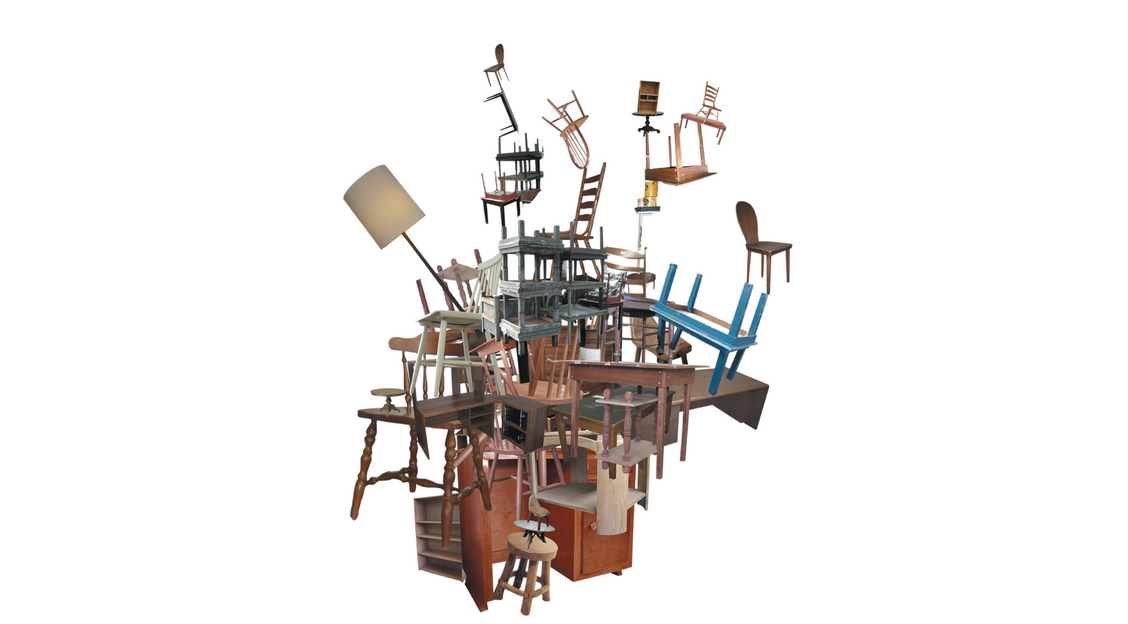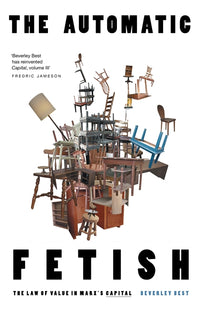Productivity’s Progress (from This World, to That Which Is to Come)
Beverley Best identifies the critique of value as the central through line of Capital III.

Capital I builds an analysis of the capitalist mode of production as a system of expanding wealth, where accumulation is capital’s driving force and sine qua non: for capital to live on, it must expand. Marx’s critique of value is that of the specific form and substance of capitalist wealth. It is also the critique of a specific movement and its mythologization: the movement of value as it creates more value, and the appearance that it can do so on its own steam. This is capital’s definition and mythos.
The process of accumulation takes the phenomenal form, in the world of appearances, of the competitive struggle between capitals to secure profit. Of course, securing profit is not sufficient in itself. If the actions taken to meet this goal increase the costs of production more than the returning profit, then the effort is in vain. The objective of the individual capitalist is, therefore, to secure an advantageous rate of profit – a favourable ratio of profit to production costs. From the perspective of the individual enterprise, i.e., ‘from the standpoint of capitalist production itself ’ (368), the goal is to increase the mass of profit in relation to the cost of doing business.
Again, from the standpoint of capitalist production, if the length of the working day remains constant, the only way to increase the mass of profit is to increase the mass of product – the mass of commodities – produced in a day (in an hour, or in a production cycle), relative to the competition.
For the capitalist, the inverted appearance of things that generates the intuitive and practical necessity of augmenting productivity is this: the commodity produced for market is a value equal to its cost price; the capitalist then inflates the commodity’s cost price to sell it at its production price; the difference between cost price (what it costs the capitalist to produce the commodity) and production price (the price at which the capitalist will sell the commodity) is the portion of the commodity’s value that represents the capitalist’s profit.
The capitalist imagines that if they can produce more commodities per hour (per day, per production cycle) than their competitors, they can then offer their comparable commodity at a lower price and capture a larger share of the market. In the perception of the capitalist, what they lose in profit per commodity by lowering the commodity’s price, they are compensated for by selling a greater number of commodities – underselling the competition in order to outsell them:
This phenomenon simply appears on the surface as a fall in the amount of profit on the individual commodity, a fall in its price, and a growth in the mass of profit on the increased total number of commodities produced by the total social capital or the total capital of the individual capitalist. The matter is then conceived as if the capitalist voluntarily made less profit on the individual commodity, but compensated himself by the greater number of commodities which he now produces. (337)
In favourable circumstances, the mass of profit yielded by the greater mass of product increases more than what is lost by cheapening the individual commodity. This greater mass of profit, in appearance, is achieved through multiplication, through setting the price of the individual commodity and multiplying (and realizing) that price as many times as possible, and at ever-increasing numbers (338). This is one dimension of the way in which, in a capitalist mode of production, growth is by necessity endless; the imperative of competition demands it.
This surface story (and corresponding practice of the capitalist) presupposes the progressive development of the social productivity of labour. But if this is the surface story, what is actually going on below the surface? If the capitalist responds to competitive struggle with other capitals by exploiting what human ingenuity makes possible – greater productivity through technical means – in order to sell a larger quantity of a cheaper commodity, what dynamics are in motion at the level of capital’s concept? The historically compelled growth of labour productivity is the material pivot that articulates the inverted appearance from the standpoint of capitalist production described above, with the inner relations of capital’s movement considered as a whole. Part III of Capital III explores how, at this deeper level, increased productivity in its capitalist expression entails a ‘gradual fall in the general rate of profit’ of enterprise system-wide (318).
To illustrate the dynamic of the falling rate of profit, Marx stabilizes wages, the length of the working day, and the rate of surplus-value (i.e.,presumes an unchanged level of exploitation of labour). As we know, variable capital (v) represents a certain amount of wages paid out by the capitalist, which in turn represents a ‘definite number of workers set in motion’ (317). A definite number of workers, working at a certain level of productivity, absorbs a definite amount of value in the form of the means of production (raw material, depreciation of machinery), transferring the value of these means of production – or, the value of the constant capital (c) – to the value of the product. The expression of the definite amount of c that can be absorbed and transferred by v is another way of describing the organic composition of a capital investment. To conceive of the definite quantity of raw material that can be worked up by a certain number of workers is simply to posit the organic composition of a certain capital investment as a ratio of c to v.
A rise in productivity entails increasing the quantity of commodities produced per day (hour, cycle, year) without increasing the number of workers required to produce them – that is, without increasing the investment in wages, or, v. Even better, from the standpoint of capitalist production, would be to increase the output of product while reducing the wage obligation. To either stabilize or reduce investment in v (reducing the number of labour hours per commodity), some kind of technical development of the labour process itself is required, whether through the introduction of new production methods, new modes of organizing either the process or the cooperation of workers, new machines, or other technologies that streamline or rationalize some aspect of the process.
The deep contradictions involved in the introduction of new productive technologies and methods in the specific context of capitalist production are the subject of analysis, famously, in chapter 15 of Capital I.
— An edited excerpt from The Automatic Fetish: The Law of Value in Marx's Capital by Beverley Best.
[book-strip index="1" style="buy"]

